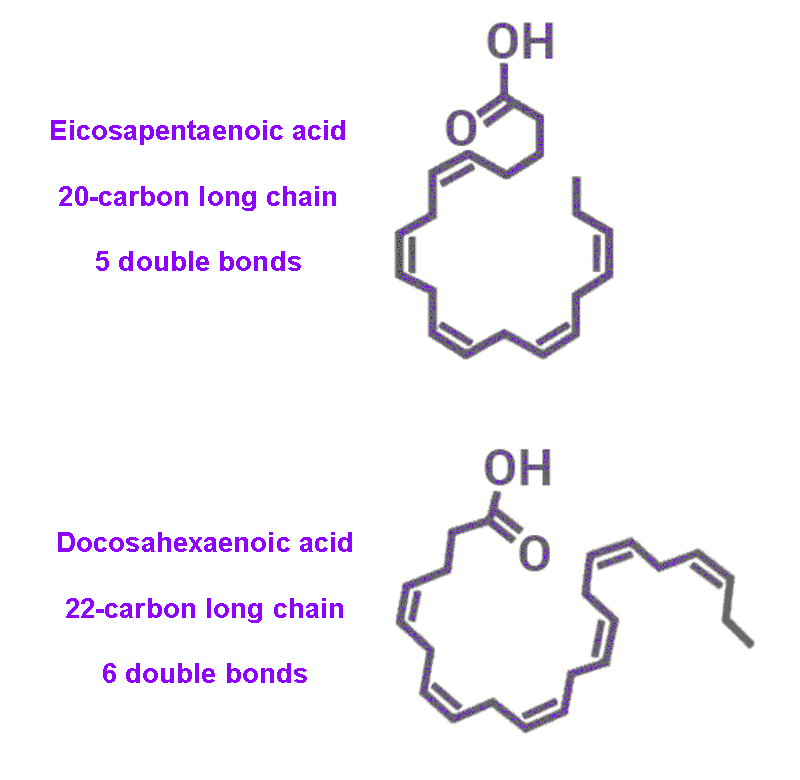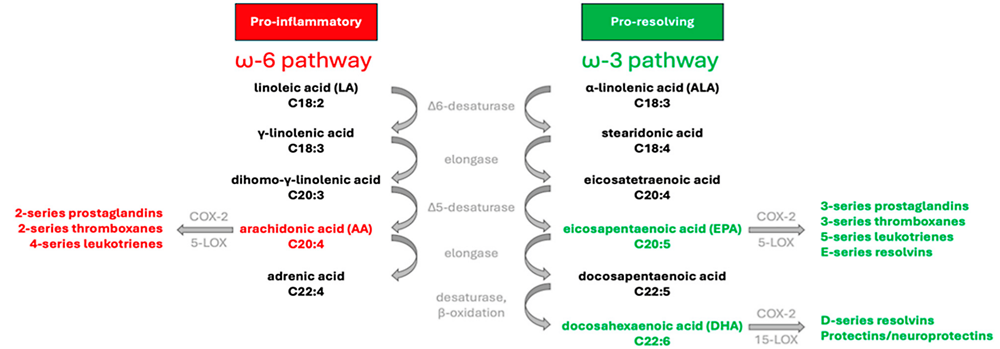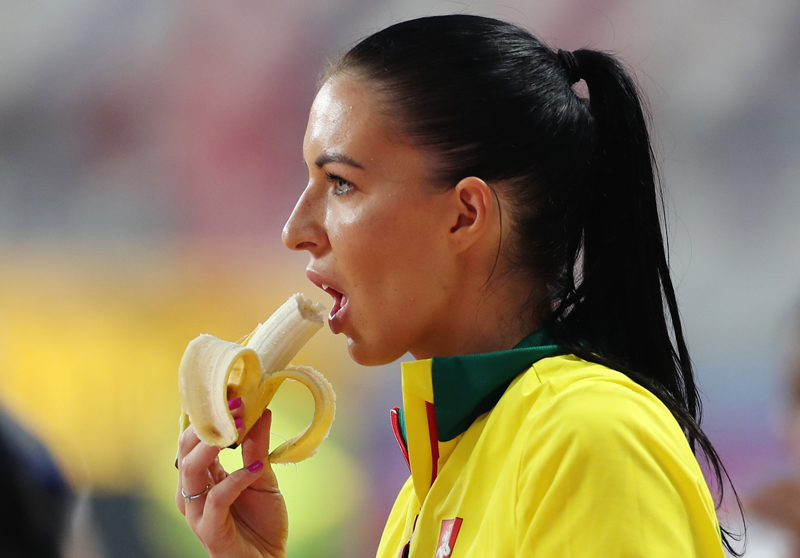You are viewing 1 of your 1 free articles. For unlimited access take a risk-free trial
O3I: your index of health
SPB looks at new research on the importance of omega-oils for athlete health, explains what the omega-3 index is and also how athletes can use it to improve their well being and performance
Decades of advice from so-called ‘health experts’ has led many people to believe that that dietary fat is something to be minimized or avoided, particularly in the context of dieting and weight loss. However, over the past 20 years or so, this myth is being gradually dismantled. The reality is that consuming the right kinds of dietary fat is essential – not just for health, but also for physical performance.
The right kinds of fats
What are the right kinds of fat, and which fats are not so desirable? Again, this is an evolving science. Forty years or so ago, the general consensus was that in order to ensure cardiovascular health, saturated animal fats should be avoided or minimized, and replaced instead with ‘healthier’ vegetable polyunsaturated fats(1).
However as more and more research was conducted in this area, it became clear that the relationship between health (particularly cardiovascular health) and dietary fat is far more nuanced. Indeed, the current thinking is that while excessive saturated fat might play a role in cardiovascular disease, there are more important dietary factors including high intakes of processed ‘trans fats’ (often from vegetable sources), high intakes of refined and sugary carbohydrates, low intakes of antioxidants from fresh fruits and vegetable and low intakes of the essential omega-3 and omega-6 fats (see box 1), but especially omega-3(2). In short, it’s much less about the quantity of fat or it’s saturated/unsaturated nature, but far more about the quality of the fat, in particular, how unprocessed it is and how rich it is in essential omega-3.
Box 1: What are EPA and DHA?
There are two types of essential fats for human health: omega-3 oils and omega-6 oils. These two types of fats are essential, because as well as being absolutely vital to build healthy cell membranes in our bodies, their chemical structure means that they can also be used to make hormone-like substances in the body called prostaglandins, which go on to regulate a host of other functions. Although omega-6 can be synthesized from omega-3, the reverse is not true. This makes ensuring an optimum intake of dietary omega-3 oils especially important, especially as omega-6 oils are relatively abundant in the diet. EPA and DHA are two particularly important omega-3 oils as they provide a number of health benefits when consumed in the diet (and they cannot be synthesized in the body). Their long chains containing lots of carbon-carbon double bonds gives them the necessary shape and chemical reactivity needed to facilitate key metabolic functions in the body required for health.
Focus on omega-3 and 6 fats
Why are the right dietary fats so vital for health and performance? Well, fatty acids are essential components of cells, crucial for creating an optimal environment for membrane protein function. In particular, the quantity and type of unsaturated fats in cell membranes determine how fluid the membrane is, how efficiently cells can signal and the overall cellular function(3). Therefore, consuming the right types of dietary fats in the right ratios is critical for health.
Beyond that however, intense physical activity and sport training is known to lead to metabolic changes in the utilization of fats as energy sources and the mobilization of fat reserves in adipose tissue, and the transport of lipids between organs and tissues(4). Long-term and intense physical training can lead to changes in cell membrane composition, particularly in the ratio of long-chain omega-3 and omega-6 polyunsaturated fatty acids, which in turn impacts cellular processes and physiological functions(5,6). And as we will see shortly, when the ratio of omega-3 to omega-6 fats in cell membranes tips too far in favour of omega-6 at the expense of omega-3, this can have a detrimental impact on health.
Box 2: Omega-3 and muscle function
Before we go on to look at the ratio of omega-3 to omega-6 in cell membranes, it’s worth mentioning that omega-3 fats have a special relevance to athletes. That’s because evidence has begun to accumulate that the long-chain omega-3 polyunsaturated fatty acids eicosapentaenoic acid (EPA), and docosahexaenoic acid (DHA) – see box 1 - play an important role in muscle protein synthesis and overall skeletal muscle health.
As we explained in a recent SPB article, it turns out that when EPA and DHA are taken up into muscle tissue, they are able to help activate anabolic signalling proteins that are known to regulate muscle protein synthesis(7). In other words, they appear to help ‘switch on’ signals that instruct muscle cells to take up amino acids and incorporate them into muscle proteins. Good evidence for this comes from a study on fish oil supplementation (a superb source of EPA and DHA) in healthy young and middle-aged men and women(8). This supplementation led to enhanced activation of a key signalling pathway known as ‘mTOR-p70s6k’, which in turn led to a 50% increase in muscle protein synthesis. Another study on resistance-trained young men demonstrated that EPA/DHA supplementation boosted the anabolic response produced compared to just feeding protein alone(9).
More generally, consuming EPA/DHA may positively influence several other mechanisms involved in resistance-training adaptations. These enhanced mechanisms include factors such as muscle fiber type transition, enhanced neurological recruitment of muscle fibers, reduced muscle protein breakdown, improved insulin signalling (helping amino acids to be taken up into muscle cells), enhanced muscle cell membrane function and the correct regulation of inflammation following training(10-12).
Omega-3 to omega-6 ratios and inflammation
As we suggested above, when the ratio of omega-3 to omega-6 fats in cell membranes tips too far in favour of omega-6 at the expense of omega-3, there are negative impacts on health and performance. To understand this, it’s important to appreciate how the metabolism of omega-3 and omega-6 oils in the body differs. Without delving too deeply into complex biochemistry, we can summarize this difference in terms of inflammation and inflammatory processes; the metabolism of omega-6 fats leads to intermediate compounds that can stimulate inflammatory processes in the body, whereas the metabolism of omega-3 fat leads to intermediate compounds that tend to dampen down inflammatory processes in the body (see figure 1). While the body requires both omega-3 and omega-6 fats to function, an excessive intake of omega-6 and insufficient omega-3 intake can promote chronic inflammation, which is associated with a number of diseases, particularly cardiovascular disease(13).
Figure 1: Omega-3 and -6 intake and inflammation
Omega-3 and omega-6 fats are both required for human health. However, the metabolism of omega-6 (red pathway) produces intermediates that promote inflammation, while the omega-3 intermediates tend to dampen down inflammatory processes. The anti-inflammatory properties of omega-3 fats are thought to be due to EPA’s inhibition of eicosanoid synthesis from the omega-6 intermediate known as ‘arachidonic acid’(14). A relative excess of omega-6 intake compared to omega-3 therefore is associated with chronic inflammation, which can lead to degenerative diseases such as heart disease.
The omega-3 index
The importance of the right ratio of omega-3 to omega-6 in cell membranes has led to the development of the ‘omega-3 index’ (sometimes abbreviated (O3I). This index is defined by the amount of the two important omega-3 fatty acids EPA and DHA in red blood cell membranes expressed as a percentage of the total lipids (fats) in the red blood cell membrane. The recommended protective level score in O3I is approximately 8%, while omega-3 levels below 4% are linked to a higher risk of diseases such as cardiovascular disease (see figure 2).
Figure 2: The omega-3 index

In practical terms, the omega-3 index is calculated by taking a blood sample from the fingertip, using a simple pin-prick method and letting it dry to a spot. The dried blood is then chemically analyzed to measure the ratio of omega-3 fats to all other lipids. The O3I is considered reliable and suitable as a test of omega-3 status because it is not affected by day-to-day fluctuations in omega-3 or other fat intake(15). That’s because it takes time for new red blood cells to form and take up fats into their cell membranes, which means your O3I score is a reflection of your long-term dietary intake (weeks and months) of omega-3 and other fats, and will also reflect overall omega-3 concentrations in the body.
The omega-3 index matter and athletes
Although the omega-3 index was developed principally in the context of research into nutrition, health and disease, it is also relevant for athletes. It’s not just that athletes are (or should be!) mindful of short and long-term health, but also that an athlete’s omega-3 status is likely to impact his or her performance.
In a new study on this topic published recently in the Journal of Functional Morphology and Kinesiology, a team of Italian scientists have reviewed the data on omega-3 nutrition and the use of the omega-3 index in relation to athlete health and performance(16). In this study, they point out that various factors, including training intensity and volume or bodyweight, can impact the omega-3 index scores for athletes, and that the consensus of existing data is that the recommended O3I target range for athletes is in the region of 8–11%(17).
Based on the data they reviewed, the researchers went on to discuss a number of aspects in relation to athletes, their omega-3 nutrition and their O3I scores. The key recommendations that emerged as a result were as follows:
· Cardiovascular health in athletes – Numerous studies have suggested O3I as a valuable clinical biomarker for assessing cardiovascular risk, even in athletes, due to its strong correlation to EPA and DHA levels in cardiac tissue. Unfortunately, studies examining the dietary habits of athletes have shown that most do NOT meet the recommended intakes levels for EPA and DHA. Examples include a study of 404 Division I football players, which found that none had an O3I above 8%(18), and another study which found that almost all of the 106 German elite winter endurance athletes studied had a low O3I(19)!
· Omega-3 and injury – Because DHA/EPA exert anti-inflammatory effects and inflammation is a major factor following injury, there’s good evidence that optimizing EPA/DHA intakes can help prevent or at least ameliorate the effects of injury. Since studies have demonstrated that positive changes in omega-3 status can reduce traumatic brain injury effects caused by impacts, and that a reduction in DHA levels in the brain occurs as a result of traumatic brain injury (leading to slower recovery of motor function), it is perfectly logical and recommended that athletes whose sports involve impacts and collisions should ensure they maintain an ideal O3I score (8+)(20,21). The same is true for athletes suffering chronic injuries involving inflammation. Studies show that in rotator cuff tears of the shoulder, a lower O3I index is associated with a greater risk of injury(22). In recreational runners, higher O3I values are associated with a decreased risk of running-related injuries in recreational runners, while runners with an O3I score of under 4% are at increased risk of injury(23).
· Omega-3 and sport performance – As we hinted at earlier, a growing body of evidence suggests that an optimum omega-3 status can directly and positively impact sports performance. In particular, studies show that omega-3 supplementation and the consequent O3I score increase can enhance athletes’ adaptation to training, thereby improving sports performance and supporting post-exercise recovery(24-26). In the review study conducted by the Italian researchers mentioned above, there is robust evidence that a better O3I score via supplementation or diet or both can improve strength and power, endurance performance and mitigate exercise induced fatigue. For a summary of this evidence, readers are directed to table 1 on page 5 of the study PDF. Athletes should also be aware that this evidence also suggests increased training volume and intensity reduces O3I scores. In plain English, the longer and harder you train, the more omega-3 you need!
· Supplementation of omega-3 – Given the benefits of omega-3 and ensuring an optimum omega-3 index score, the consensus is that athletes can benefit from supplementation, especially when the diet does not contain plenty of oily fish (salmon, sardines, mackerel, herrings, trout etc). The current recommendations from recent studies are that athletes should supplement 2-6 grams per day of fish oils rich in EPA/DHA, with higher doses helping to improve omega-3 index scores more rapidly(27,28). At higher supplementation levels, desirable O3I scores (over 8%) can be achieved in athletes in only eight weeks(29). Even better, studies on a range of athletes, from recreational athletes to professional soccer players, has found that as little as five weeks of supplementation with EPA/DHA is sufficient to improve key markers of cardiovascular health and provide cardio-protective effects(30-32).
In summary
Of all the nutrients essential for good health and performance, the omega-3 oils EPA and DHA are probably the least appreciated - not just among the general population, but among health professionals too. Athletes are also likely to be unaware of the importance of these nutrients and maintaining a good O3I score. That’s partly because omega-3 oils are not considered ‘sexy’ within the athletic community and also because athletes in training have higher omega-3 needs.
Unless your diet is especially rich in omega-3 oils (eg you eat fatty fish 2-3 times per week), the chances are that your O3I score will be below the optimum 8-12%. Of course, you can remove any uncertainty by taking an O3I test. Home test kits are available online for under $100, and all that is required is a simple finger pin prick to collect a drop of blood, which is allowed to dry on a swatch, and then mailed back to the lab.
If after taking a test, you find your score is below optimum, the best strategy to bring it up to optimum is to supplement with omega-3, while increasing your intake of dietary fatty fish and other good sources of omega-3 such as walnuts, and pumpkin seed. If you like salmon and can get hold of unfarmed salmon, so much the better. Remember too that there’s something of an omega-3/omega-6 seesaw; given that omega-6 metabolism increases inflammatory intermediates, you should aim to increase omega-3 intake while ensuring your omega-6 intake is curtailed. In reality this means not using polyunsaturated oils and spreads (such as sunflower, rapeseed etc) and instead switching to cold-pressed olive oil and butter.
Regarding supplements, most athletes can benefit from taking 2 grams per day of omega-3 oil that is rich in EPA/DHA. For those who eat no fatty fish, this can be increased to 3 or 4 grams per day. If an O3I test shows your status is low, higher doses of 4-6 grams per day of omega-3 will bring it up more rapidly. Remember though that it takes many weeks or even months to raise omega-3 levels within cells, so regarding this as a long-term strategy rather than a quick fix!
References
1. Hum Nutr Clin Nutr. 1982;36(6):413-27
2. The Effect of Diet on Cardiovascular Disease and Lipid and Lipoprotein Levels Kenneth R, Feingold et al In: Endotext [Internet]. South Dartmouth (MA): MDText.com, Inc.; 2024 Mar 31
3. J. Lipids 2013, 2013, 710290
4. Annu. Rev. Nutr. 1996, 16, 121–138
5. Eur. J. Appl. Physiol. 2009, 107, 359–365
6. Nutr. Res. 2009, 29, 623–630
7. Prostaglandins Leukot Essent Fatty Acids. 2014;90(6):199–206
8. Clin Sci. 2011;121(6):267–278
9. Physiol Rep. 2016 Mar;4(6):e12715
10. J Gerontol A Biol Sci Med Sci. 2021;76(3):406–414
11. Biochem Biophys Res Commun. 2013;432(4):593–598
12. Am J Clin Nutr. 2012;95(2):428–436
13. Nutrients. 2021 Jul 15;13(7):2421
14. Adv. Food Nutr. Res. 2012, 65, 211–222
15. Lipids Health Dis. 2010, 9, 7
16. J. Funct. Morphol. Kinesiol. 2024, 9(2), 91
17. Nutrients 2014, 6, 799–814
18. J. Athl. Train. 2019, 54, 7–11
19. Int. J. Sport Nutr. Exerc. Metab. 2014, 24, 559–564
20. PLoS ONE 2014, 9, e86472
21. Med. Sci. Sports Exerc. 2016, 48, 974–982
22. Prostaglandins. Leukot. Essent. Fatty Acids 2019, 148, 35–40
23. Eur. J. Sport Sci. 2023, 23, 134–142
24. Biochem. Biophys. Res. Commun. 2013, 432, 593–598
25. Res. Sports Med. 2019, 27, 219–237
26. Prostaglandins Leukot. Essent. Fat. Acids 2022, 176, 102376
27. J. Lipids 2017, 2017, 1472719
28. J. Am. Heart Assoc. 2013, 2, e000513
29. Med. Sci. Sports Exerc. 2023, 55, 865–872
30. J. Sci. Med. Sport 2009, 12, 503–507
31. Nutrients 2021, 13, 456
32. J. Hum. Kinet. 2023, 89, 123
Newsletter Sign Up
Testimonials
Dr. Alexandra Fandetti-Robin, Back & Body Chiropractic
Elspeth Cowell MSCh DpodM SRCh HCPC reg
William Hunter, Nuffield Health
Newsletter Sign Up
Coaches Testimonials
Dr. Alexandra Fandetti-Robin, Back & Body Chiropractic
Elspeth Cowell MSCh DpodM SRCh HCPC reg
William Hunter, Nuffield Health
Keep up with latest sports science research and apply it to maximize performance
Today you have the chance to join a group of athletes, and sports coaches/trainers who all have something special in common...
They use the latest research to improve performance for themselves and their clients - both athletes and sports teams - with help from global specialists in the fields of sports science, sports medicine and sports psychology.
They do this by reading Sports Performance Bulletin, an easy-to-digest but serious-minded journal dedicated to high performance sports. SPB offers a wealth of information and insight into the latest research, in an easily-accessible and understood format, along with a wealth of practical recommendations.
*includes 3 coaching manuals
Get Inspired
All the latest techniques and approaches
Sports Performance Bulletin helps dedicated endurance athletes improve their performance. Sense-checking the latest sports science research, and sourcing evidence and case studies to support findings, Sports Performance Bulletin turns proven insights into easily digestible practical advice. Supporting athletes, coaches and professionals who wish to ensure their guidance and programmes are kept right up to date and based on credible science.












